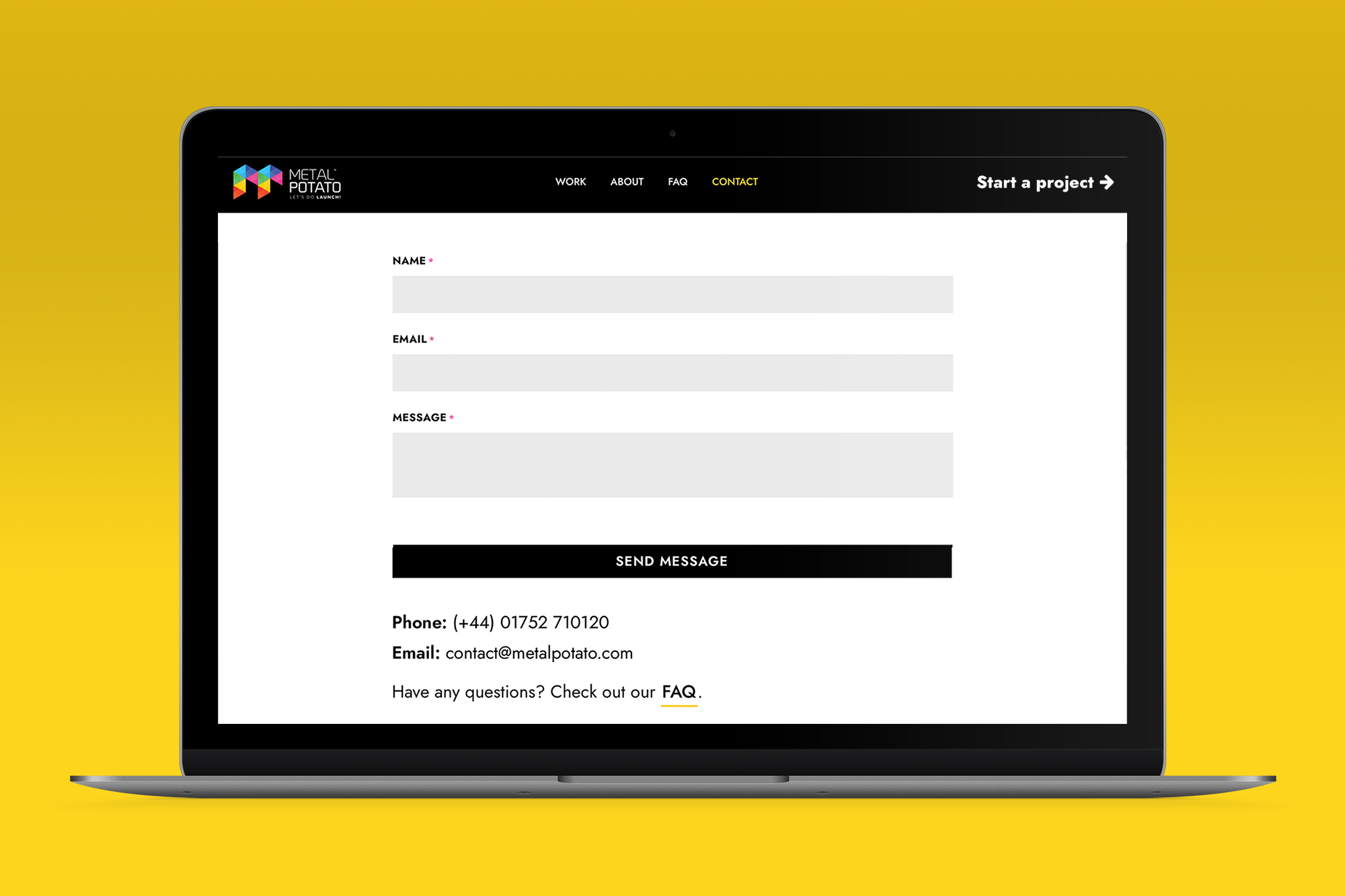Writing compelling content is not a walk in the park. It involves a lot of planning, research, and editing to ensure that your content is not only informative but also engaging. Here is Metal Potato’s step-by-step guide on how to write content for your new website.
Before diving into the nitty-gritty of crafting compelling content, it is essential to understand why content is vital for your website. Your website’s content is the voice of your business, and it is what sets you apart from your competitors. When done right, content can help you establish brand authority, improve traffic to your website, and increase conversions.
Understanding your audience and their needs
The first step in creating compelling content is to understand your audience and their needs. You need to know the audience you are targeting, what they are looking for, and how your content can help them. This information will help you create content that resonates with your audience and keeps them engaged.
One way to understand your audience is by conducting market research. This involves analysing your competitors, identifying target audience demographics, and understanding their pain points. You can use tools like Google Analytics and social media analytics to gather insights on your audience’s behavior and preferences.
Conducting keyword research
Once you understand your audience, the next step is to conduct keyword research. This involves identifying the keywords and phrases that your audience is using to search for information related to your business. Keyword research will help you optimise your content for search engines and increase your website’s visibility.
There are several tools you can use for keyword research, including Google Keyword Planner, Ahrefs, and SEMrush. These tools will help you identify the search volume and competition for each keyword and provide you with new keyword ideas.
Creating a content plan
With your audience and keywords in mind, it’s time to create a content plan. This involves outlining the topics you will cover, the format of your content, and the publishing schedule. A content plan will help you stay organised and ensure that you are consistently creating content that aligns with your business goals.
When creating a content plan, consider the different types of content you can create, such as blog posts, infographics, videos, and podcasts. Also, consider the publishing schedule and how often you will post new content. It’s essential to create a realistic schedule that you can stick to.
Writing attention-grabbing headlines
Your headline is the first thing your audience will see, and it’s what will determine whether they click through to read your content. Writing attention-grabbing headlines is crucial for getting your content noticed and increasing your click-through rates.
When writing headlines, consider using numbers, power words, and emotional triggers. Numbers and power words, such as “proven” and “ultimate,” grab attention and create a sense of urgency. Emotional triggers, such as fear and curiosity, also grab attention and encourage readers to click through to read more.
Crafting compelling introductions
Your introduction is your chance to hook your readers and keep them engaged. A compelling introduction should provide a brief overview of your content and entice your readers to keep reading.
When writing your introduction, consider using a storytelling approach or asking a thought-provoking question. You can also use statistics or quotes to capture your reader’s attention and add credibility to your content.
Structuring your content for readability and SEO
When it comes to creating compelling content, structure is key. Your content should be easy to read and scan, and it should also be optimised for search engines. This means using headings and subheadings, short paragraphs, and bullet points to break up your content.
Headings and subheadings make your content easier to read and help search engines understand the structure of your content. Short paragraphs and bullet points make your content more scannable and easier to digest. When structuring your content, also consider using internal and external links to provide additional context and resources for your readers.
Using visuals to enhance your content
Visuals are a great way to enhance your content and make it more engaging. Using images, videos, and infographics can help break up your content and provide additional context and information for your readers.
When using visuals, ensure that they are high-quality and relevant to your content. Also, consider optimising your visuals for search engines by using descriptive file names and alt text.
Incorporating calls-to-action
A call-to-action (CTA) is a statement that encourages your readers to take a specific action, such as signing up for your newsletter or making a purchase. Incorporating CTAs into your content is crucial for increasing conversions and driving business growth.
When creating CTAs, ensure that they are clear, concise, and relevant to your content. Also, consider placing your CTAs in prominent locations, such as at the end of your content or within your content’s body.
Editing and proofreading your content
Before publishing your content, it’s essential to edit and proofread it thoroughly. Editing involves reviewing your content for clarity, flow, and accuracy, while proofreading involves checking for spelling and grammar errors.
When editing and proofreading your content, consider using tools like Grammarly and Hemingway to identify and correct errors. Also, consider having a second pair of eyes review your content to ensure that it’s error-free and ready for publishing.
Optimising your content for search engines
Once your content is ready for publishing, it’s time to optimise it for search engines. This involves using your target keywords in your content’s title, headings, and body and ensuring that your content is properly formatted and structured.
When optimising your content, also consider using meta descriptions and title tags to provide additional context and information for search engines. Meta descriptions and title tags are the snippets of text that appear in search engine results, and they can help increase your click-through rates.
Promoting your content through social media and other channels
Creating compelling content is only half the battle. You also need to promote your content to ensure that it reaches your target audience. One way to promote your content is through social media, where you can share your content with your followers and encourage them to share it with their networks.
Other channels for promoting your content include email marketing, influencer outreach, and guest posting. It’s essential to have a promotion strategy in place to ensure that your content is reaching the right people and driving traffic to your website.
Tracking and measuring your content’s success
Finally, it’s essential to track and measure your content’s success to determine what’s working and what’s not. You can use tools like Google Analytics and social media analytics to track your website’s traffic, engagement, and conversions.
When tracking your content’s success, consider metrics like page views, bounce rates, and time on page. These metrics will help you understand how your audience is interacting with your content and identify areas for improvement.
Conclusion
Crafting compelling content is not an easy task, but it’s one that can pay off in a big way. By understanding your audience, conducting keyword research, and creating a content plan, you can create content that resonates with your audience and drives business growth. By following the steps outlined in this article, you’ll be well on your way to creating content that grabs your audience’s attention and keeps them coming back for more.
Do you need help with your content? Contact us today to learn more about our services and the ways in which we can empower your online success.
Let's make a website!
Book a FREE video call to discuss your business, project strategy, and more!
"*" indicates required fields
More from Metal Potato
Contact Page Design: A Blueprint for Success
Learn how to optimise your contact page for better engagement and conversions with expert tips and inspiring examples.
Can Apple Vision Pro Revolutionise Computing?
Discover the Apple Vision Pro: a mixed-reality headset set to redefine computing, work, entertainment, and education.
How to Choose the Perfect Typography for Your Website
Master the art of web typography... from font selection to readability, create a visually stunning and user-friendly website.
The Power of WordPress for Small Businesses
Build a strong online presence for your small business with WordPress! It's easy to use, SEO-friendly, and very cost-effective.
Celebrating 40 Years of the Apple Mac
Explore 40 years of Mac evolution! Celebrating Apple's iconic computer and its impact on design, technology, and creativity.
Why LinkedIn Should Be Your Top Priority
Maximise career growth with LinkedIn's powerful benefits! Unlock networking opportunities, connect and build your personal brand.






